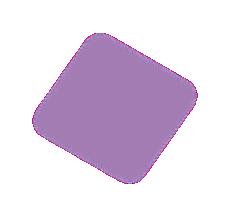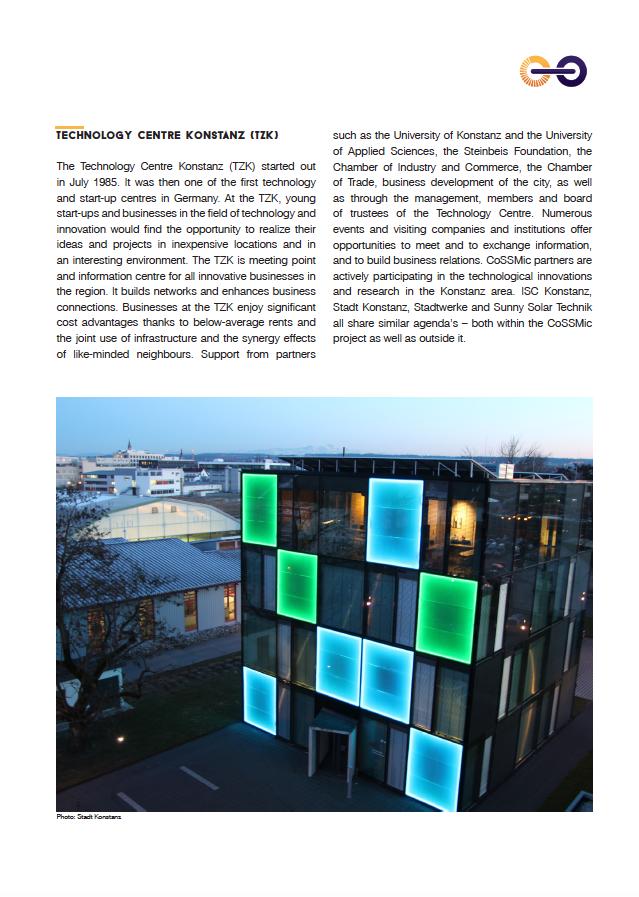Co
llaborating S mart
Providing technology for establishing autonomous, self-supporting energy communities S
European Union


Co
llaborating S mart
Providing technology for establishing autonomous, self-supporting energy communities S
European Union

ICT Smartcities 2013
FP7-SMARTCITIES-2013
CoSSMic
Co llaborating S mart S olar-Powered Mic rogrids
Collaborating Smart Solar-powered Micro-grids
Providing technology for establishing autonomous, self-supporting energy communities
FP7-ICT-2013.6.4 – Optimising Energy Systems in Smart Cities 2013–2016
European Union
This project received support from the European Union in the FP7 programme
This project received support from the EU in the FP7 programme.
Providing Technology for Establishing Autonomous, Self-Supporting Energy Communities

Decarbonisation of European energy systems needs to speed up in order to reach the goals set by the European Energy Roadmap and Low Carbon Europe Roadmap by 2050. The transition to RES plays a key role in the plans to reach these goals. In Europe, 21.9 GW of PV-systems were connected to the grid in 2011, compared to 13.4 GW in 2010, which is in line with the average of 40% increase during the past 15 years. This steady increase has been stimulated tremendously by countries like Germany and Italy using powerful incentives to install systems – both in terms of large power plants and distributed but grid-connected roof-top systems for home owners.
Although this trend is very positive, it offers significant challenges for the grid-operators with respect to balancing the production and the demand, as the predictability of solar power generation – in countries with highly fluctuating insolation, - and subsequent solar cell power output – is very limited. To alleviate this situation and improve the CoSSMic project is developing an innovative autonomic ICT based system, coordinating the energy usage and storage and the exchange with the public grid of clusters of collaborating building micro-grids.
The system will be governed by preferences and constraints set by the building inhabitants, using modern interaction devices such as smartphones and touchpads, and are exploiting pricing signals and other demand side guidance provided by the electric power retailers and public grid operators. Storage can be provided by dedicated batteries, and also by battery powered units connected temporarily for charging, e.g. electric cars. Weather forecasts will be leveraged to predict both the output from the local PV panels and the energy consumption of the households, and thus enable near optimal coordination.
CoSSMic is designed as a low threshold technology, facilitating the emergence of energy -sharing neighbourhoods in a bottom-up manner while requiring minimal central support and resources. To this end the architecture follows a principle of distribution and local autonomy and is designed to achieve robustness to component failures, flexible deployment, scalability and self-configuration. Furthermore the software is designed to run on low cost hardware and the necessary communication with the devices and between households will be based on existing communications infrastructure commonly available in buildings nowadays, such as wifi and Internet, complemented with a variety of lower level protocols for the integration of sensors and devices.





CoSSMic’s ICT solution integrates the entire energy production and consumption network. This ranges from individual appliances in household to neighbourhood sharing among clusters of energy consumers. Once the sharing system reaches a certain size, its consumption and production behaviour effects the collective energy infrastructure as well. This necessitates a swift communication between individual producers, network managers and energy producers. CoSSMic develops the systems to govern and manage these interactions.






























PROJECT STRUCTURE
First the research partners, together with the trial locations, Konstanz and the Provence of Caserta developed a user-centric concept in WP2, in order to design user interfaces that includes involvement of stakeholders from the start. In WP3, the technical architecture and technology baseline was be set up, while in WP4, a computational grid of software agents – which were able to negotiate the optimal scheduling of power sources to energy storages on behalf of the users – were designed and developed.
In WP5 the actual trials took place in Caserta and Konstanz, including the implementation of equiment and installing of software, overseeing the collection of data during the trial in accordance with the evaluation plan provided by WP6, and coordinating necessary modifications.
This process included the recruitment of new users during the trial to evaluate the low threshold profile targeted by CoSSMic and the support for neighbourhood growth. WP6 evaluated the definition of the data to be collected, definition of procedures for the collection of data, performed data analysis and reported the results and the user feedback.
WP7 was in charge of the outreach-oriented activities of CoSSMic, including creating visibility of the project, disseminating the project results and planning and preparing the replication of results after the end of the project.
scenarios conceptual model


The visual storyline attempts to break down the complex story of CoSSMic. Where would you start if you had to explain that somewhere in the near future, we will share energy between appliances, households, neighbourhoods, cities and even regions?
We made the choice to start small, as the everyday consumer will experience the benefits of CoSSMic technology in a very tangible way. You would like to program your dishwasher to start working when the energy price is low, but at the same time, it cannot divert hot water away from your shower! So, comfort and practicality are key themes when it comes to the uptake of energy management technologies.
By showing how sharing energy results in price benefits for all, we set the stage for introducing the CoSSMic system and its associated technologies. By doing so, we explain how costs can be reduced, energy consumption and production can occur more sustainably and what the long-term effects of sharing energy are.
In 15 visuals, we told the entire CoSSMic story, starting from a household and zooming out until we reached its impact on the world.























































think of it as a neighbourhood barbecue:
Everyone brings something to share this works with food as well as with energy

DEPENDENCY on the net results in high bills
however, if you install solar panels, you can produce even more energy than you need!































EVERYONE in your city or village has a contract
you and your neighbours are not the ONLY ones
and sometimes the BILLS are rather high...











CoSSMic allows you to share surplus energy with your neighbours or other people in your neighbourhood. If you normally supply surplus energy to the grid, why not supply it to your neighbour instead?

























He might do the same for you...
If you think bigger, you see that we can connect you and your neighbour, but also neighbourhoods, cities, and districts.




















sharing
As CoSSMic user, you have full system control via (remote) devices.




































































































You can set preferences for sharing, and your agent will act on them.
This ensures that you keep enough energy for heating water, running appliances and lighting.
















































































You provide and receive energy from other CoSSMic users with whom you are connected.




























Your battery is fully loaded! Do you want to share energy? YES/NO
current energy utilization


Summarizing, what are the advantages of the CoSSMic system?
Customize your preferences and reduce peaks on the grid to keep electricity prices lower.
This utilizes solar energy and will lead to a cleaner future with less fossil fuels.
The system is smart , leading to lower electricity prices and full access for control and customization.
Summarizing, what are the advantages of the CoSSMic system?
Customize your preferences and reduce peaks on the grid to keep electricity prices lower.
This utilizes solar energy and will lead to a cleaner future with less fossil fuels.
The system is smart , leading to lower electricity prices and full access for control and customization.
individual adjustments


Your ‘agent’ will represent you in the digital world of information and energy exchange. sharetooptimizeself-consumption






user interfaces

limitedsharing U rules and policies
user A renewable energy input
car (storage)
mobile access
private public
renewable energy as input heating battery (storage) power supplier companies



















integrating renewable energy into the public grid agent
servi c e e n a b l e tnem
i n t ernet o te
auxilliary services equipment
FLEXIBLE users set preferences CLEAN utilizing solar energy CHEAPER sharing energy reduces costs PEAK SHAVING less pressure on the grid SUSTAINABLE less dependency on fossil fuels SMART full remote control and integration 13 14 15





During the CoSSMic project, the consortium developed an array of visal and textual materials. These materials were used in various outreach activities, brochures, workshops and on the dedicated project website (now defunct). Here follows a selection of these materials.
















VISUAL DESIGN:
(C) BOUKJE.COM CONSULTING BV 2013–2022


This project received support from the EU in the FP7 programme.


